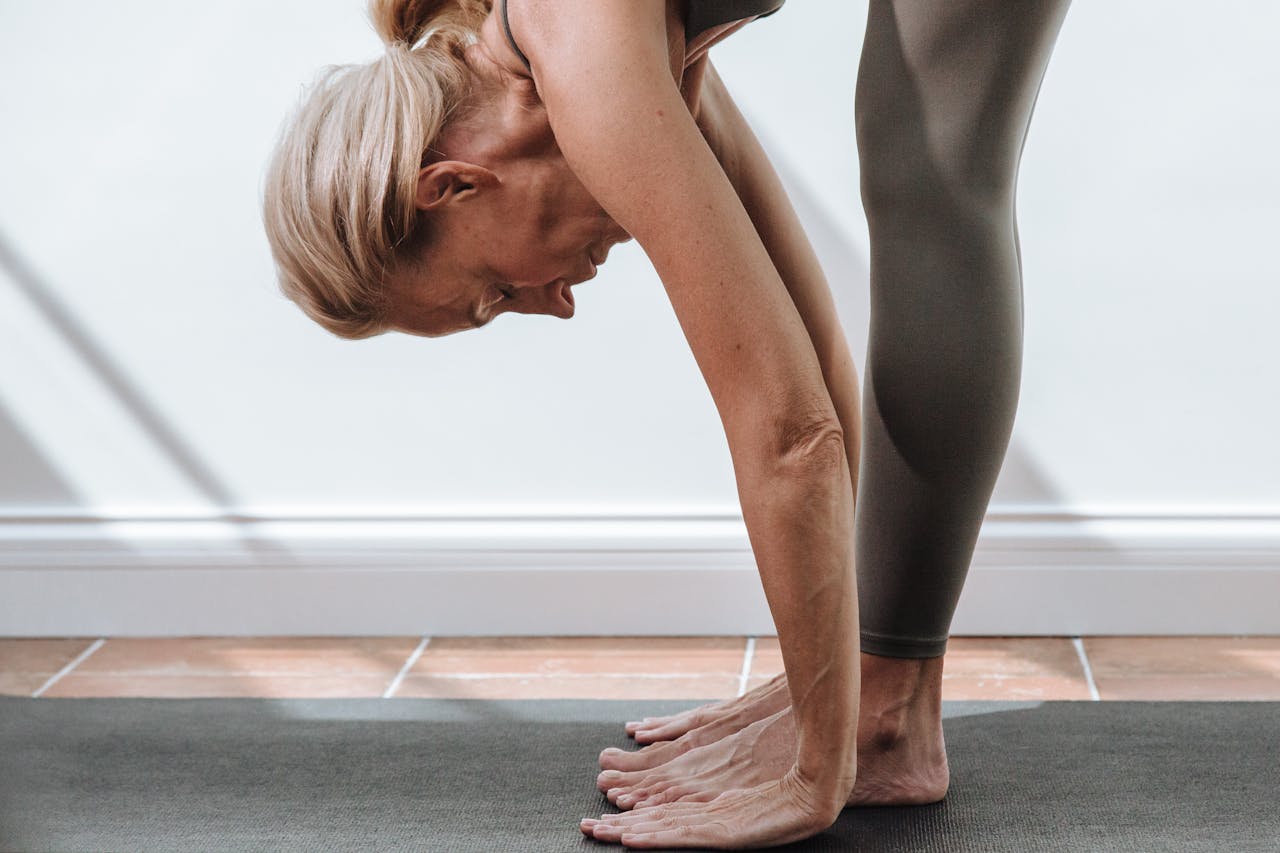
Table of Contents
Uttanasana is a standing forward bend pose that stretches the hamstrings and lower back. Commonly known as a forward fold, the word Uttanasana originates from ancient Sanskrit.
Uttanasana Origin
It consists of three parts: “ut” or intense, powerful or deliberate, “tan” meaning to stretch or extend or lengthen and “asana” standing for posture or pose.
In Sanskrit, Uttanasana does not stand for the forward bend in its direct translation. However, it includes the primary mindset that applies to most yoga poses. In the case of Uttanasa, the focus shifts to deliberate for ut and lengthen for tan.
Benefits of Doing a Standing Forward Fold
- Strengthening the hip flexors, front of the thighs, and abdominal muscles, mainly when deliberately activated.
- Relieving tight hamstrings.
- Stretching the back of the hips, hamstrings, and calves.
- Strengthening the back of the hips, knees, hamstrings, and calf muscles.
- Releasing the back of the spine in a torso bend.
- Lengthening the spinal nerves.
- Relieving tension along the back of the spine and neck.
- Strengthening the back of the knees, mainly if the knees are active.
- Relieving spinal and hip tightness.
- Stimulating kidneys, liver, and spleen, mainly if you focus on the midsection. In this regard, it may help to draw in your belly (at least during the exhales, though you could try to maintain this while inhaling and exhaling)
- Reducing stress, anxiety, depression, and fatigue.
- Calming the mind and soothing a nervous disposition due to the head being lower than the torso.
- Improving digestion.
- Easing symptoms of menopause, asthma, headaches, and insomnia.
- Therapeutic for infertility, osteoporosis, and sinusitis.
Adding Length To Our Yoga Asana
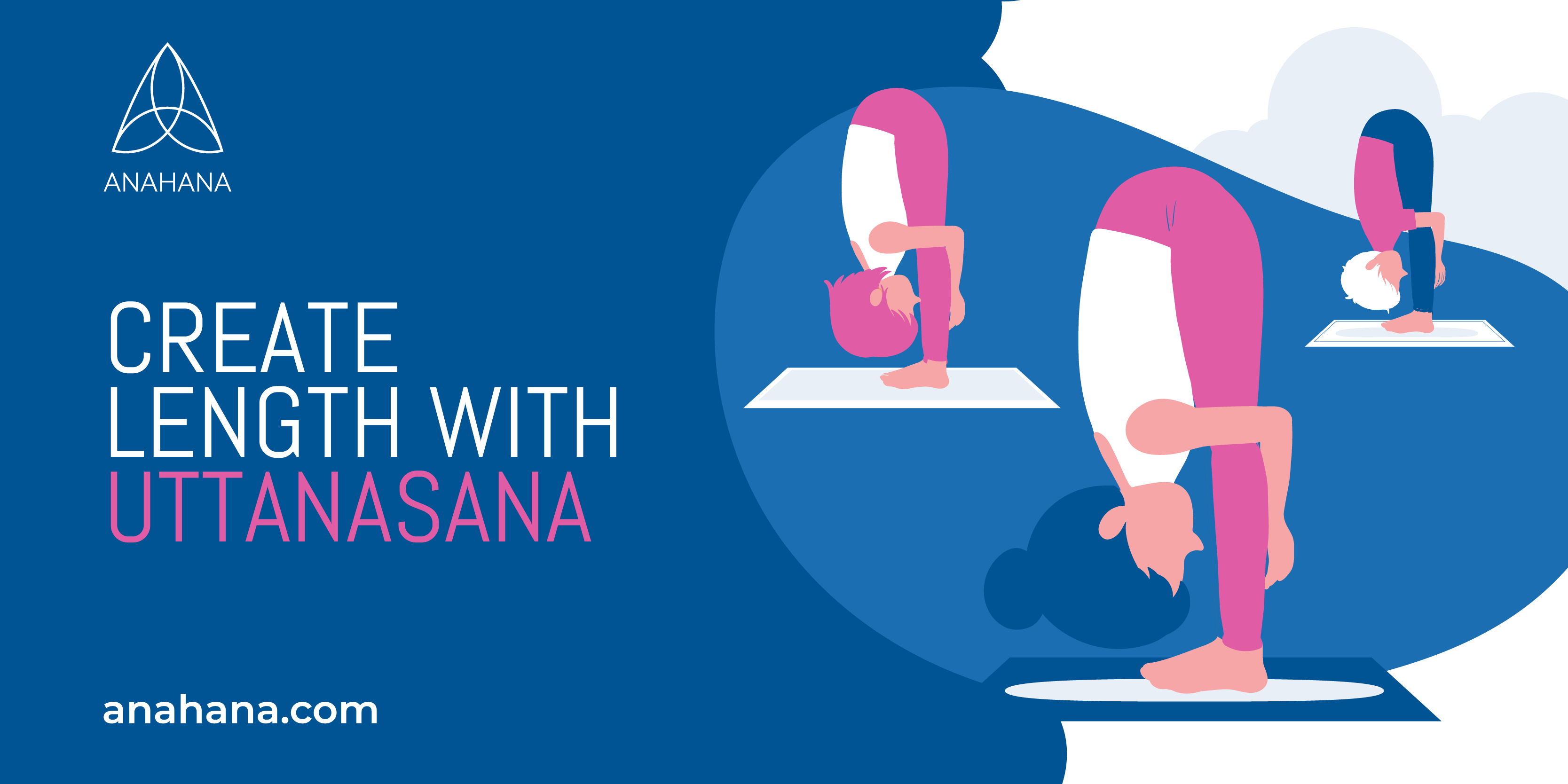 Lengthening the body parts is one of the primary tasks when practicing asanas. One example is lengthening the spine in straight, bent, backward, and twisted positions. When working with the spine, the feeling of length is a critical component – this is why yoga teachers often say, “make your spine feel long.”
Lengthening the body parts is one of the primary tasks when practicing asanas. One example is lengthening the spine in straight, bent, backward, and twisted positions. When working with the spine, the feeling of length is a critical component – this is why yoga teachers often say, “make your spine feel long.”
What creates the sensation of length or lengthening?
The feeling of length originates when connective tissue stretches or tenses. This connective tissue includes ligaments, tendons, joint capsules, and the connective tissue that is within and surrounds our muscles.
What causes our connective tissue to be stretched or tensioned?
Without external force or movement, muscles exert against an opposing force. It can also come from the weight of parts of the body. When the spine lengthens, spinal muscles generate the feeling of length in the related connective tissue.
Lengthening the short side of a pose
A more pose-specific approach is lengthening the shortened body parts in a particular pose. In Uttanasana, while the pose naturally lengthens or stretches the back, the front of the body experiences lengthening sensations, particularly at the front of the hips and waist.
How Lengthening Leads to Being Deliberate in Our Asana Practice
The sensation of lengthening is not only a way of activating the muscles, but it is also a way of generating sensation to “feel” or sense the body while doing a yoga pose or any other activity.
This, in turn, switches on the feeling of deliberation necessary for a good yoga practice. If we can feel our body, we can make the required adjustments so that all body parts work together to provide support.
Contraindications for Uttanasana
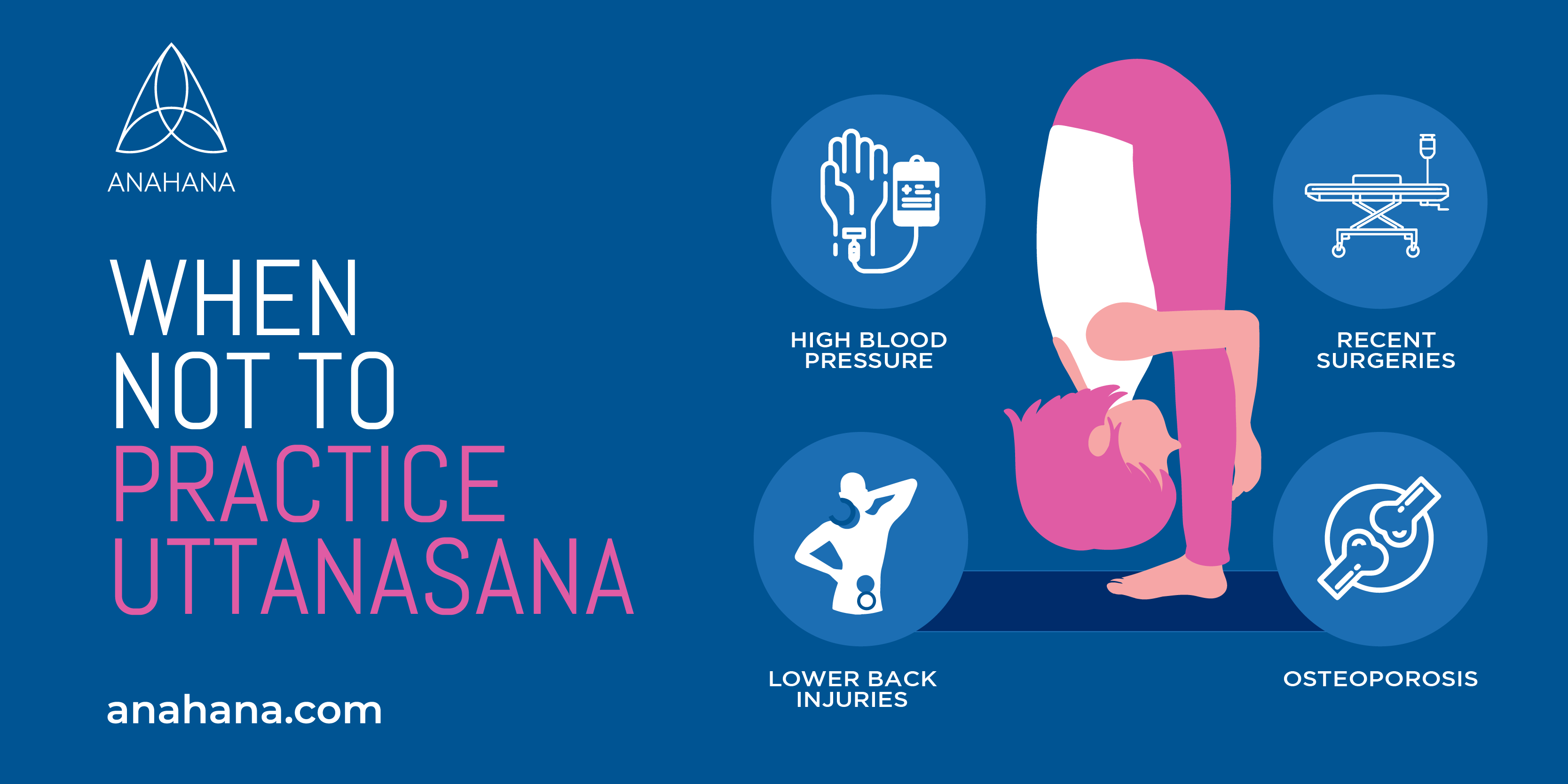 While there are benefits to doing Uttanasana, there are also dangers or contraindications for people with certain conditions, such as:
While there are benefits to doing Uttanasana, there are also dangers or contraindications for people with certain conditions, such as:
- High or low blood pressure
- Glaucoma
- Osteoporosis or scoliosis
- Lower back injuries or neck injuries, including disc herniation and degenerative spinal pathologies
- Recent surgeries
Hyperflexible people should avoid pushing their knees back into a hyper-flexed position. Learning to activate the thigh muscles and recognize the feeling of activation is essential — work at keeping the thighs active while bending forwards. Alternatively, keep the knees slightly bent.
Alternatives to Uttanasana
A downward-facing dog is an alternative pose for this “intense stretch pose” (Adho Muka Svanasana). This pose has its contraindications, but it is a possible substitute for any standing forward bend pose. If flexibility is limited, there is an option to practice Uttanasana while standing in front of a chair, facing it, and placing the hands on the chair. If reaching the floor is not an option, placing your hands on the blocks is another option to ease into this asana.
Try sitting in a chair and bending forwards. This will have less effect on hamstrings, but you can help turn forward at the hip level.
Standing forward fold with feet hip distance apart
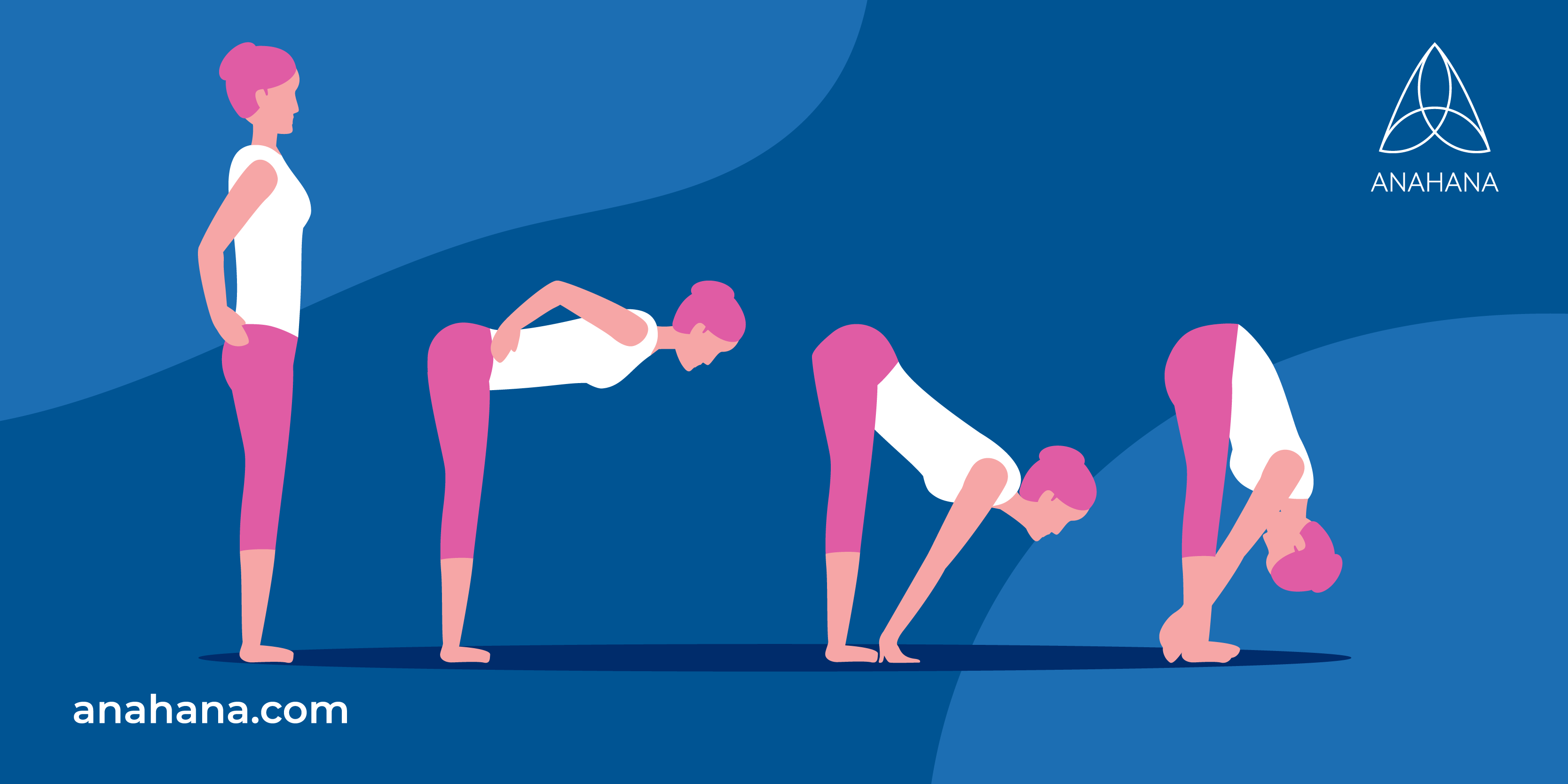 When first learning or doing Uttanasana, start with the feet hip distance apart. Stand with your knees straight and feet even (i.e., back of the heels on the same line).
When first learning or doing Uttanasana, start with the feet hip distance apart. Stand with your knees straight and feet even (i.e., back of the heels on the same line).
- Bend forwards at your hips and place your hands on your legs. If you can reach the floor, try placing your fingertips on the floor.
- Alternatively, do this pose in front of a chair. When bending forwards, place your hands on the edge of a chair. This can be helpful if you have tight hamstrings.
- Place your hands on yoga blocks if you have them.
- Work towards placing your palms flat on your yoga mat beside your feet.
What does “bending forwards at the hips” mean?
Bending forwards at the hips means tilting the hip bones (which, together with the sacrum, form the pelvis) forwards. If the knees are straight, this action helps to stretch the hamstring muscles.
A handy reference for tilting the hip bones forwards is the pubic bone. If you lean forwards at the hips, the pubic bone will move downwards and backward. Therefore, one way to bend forwards at the hips is to focus on moving the pubic bone down and back, allowing the upper body to follow along.
Another reference is the sacrum – the triangle of bone at the base of the spine. When bending forwards at the hips, the sacrum will naturally lift.
Another reference is the sitting bones. These are the bones at the base of the pelvis that can be felt when sitting on a hard chair or on the ground. To tilt forwards at the hips, try focusing on moving the sitting bones backward and then upwards.
Whether you use pubic bone, sacrum, or sitting bones as movement references, it’s easier to maintain focus when moving slowly and smoothly.
Widening or spreading sitting bones when bending forwards
Focusing on using the sitting bones when tilting the pelvis forwards, near the bottom of the forward bend (the limit level), can be accompanied by widening the sitting bones.
It helps to turn the feet slightly inwards for this. Another option is to bend the knees, followed by thighs and shins, inwards relative to the feet. This will result in arches flattening slightly. Turning the legs inwards creates length and space so that the hip muscles have room to “spread the sitting bones.”
While holding Uttanasana, spread the sitting bones slowly and smoothly, and then relax the action. Repeat. When standing up from Uttanasana, it is helpful to draw the sitting bones inwards. Use these two actions when doing Uttanasana with the feet together.
Standing forward bend pose with feet together: mountain pose
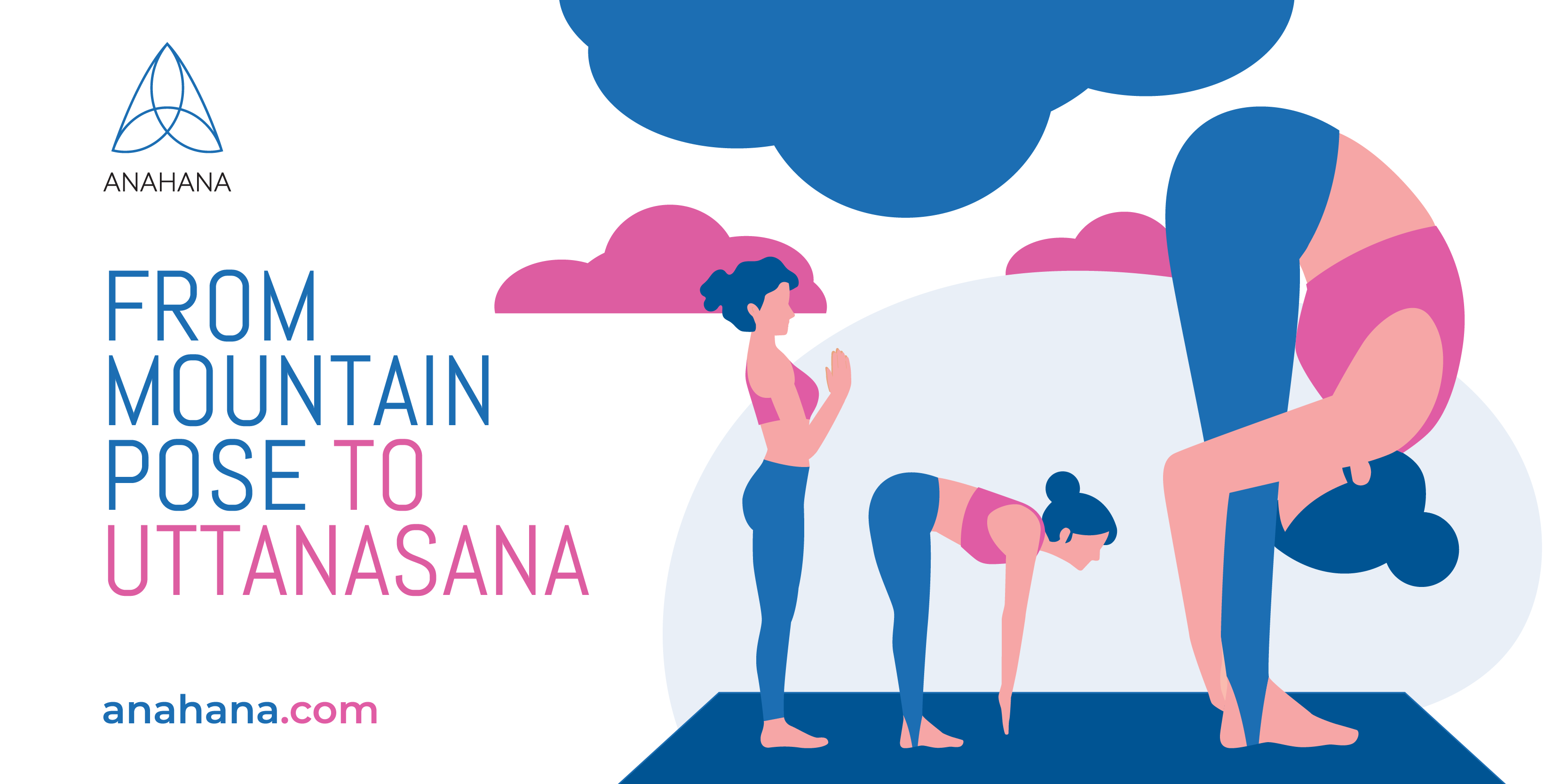 Classic Uttanasana is taught with the feet together, starting in mountain pose for this version, including when performing Surya Namaskara.
Classic Uttanasana is taught with the feet together, starting in mountain pose for this version, including when performing Surya Namaskara.
To help spread the sitting bones as in the forward fold, stand with the feet touching but heels slightly separated, shifting the weight towards the forefeet as you bend and then pivoting the heels outwards as you fold forward.
When doing the intense stretch pose with the feet together, less space will become available between the thighs and the belly. Therefore, moving the sitting bones towards each other as the fold progresses is helpful. This helps to spread apart the fronts of hip bones, particularly at the front points or the ASICs.
Instead of turning the heels out, do the opposite and bring the heels together while slightly separating the fronts of the feet. Another option is to turn the legs outwards relative to the feet. This will cause the arches to lift slightly.
Whether the focus is on spreading the sitting bones or drawing them together, as the fold deepens, it is beneficial to exert a slight rearward push on the pubic bone, a direct the push towards the sacrum while varying the angle of this push to fine-tune the sensations in the hips.
Engaging your Hamstrings in Uttanasana
The muscles can be stretched during relaxation. However, it’s possible to try them while activated. For example, when sitting down slowly, the thigh and glute muscles lengthen while remaining active. This active lengthening is what allows one to sit down slowly with control.
The best way to relax hamstring muscles is by using the hands to support the upper body since, with the help of hands, hamstrings are no longer fully holding the body weight. Therefore when the palms are pressing against the legs, a chair, or yoga blocks as you bend forward, the focus shifts towards relaxing the hamstrings and deep stretching.
Glute muscles can and should be engaged In addition to the hamstrings. The truth is that spreading the sitting bones or drawing them naturally causes the glutes to activate and helps to activate the hamstrings easier.
Preparatory poses for Standing Forward Bend
Preparatory poses for standing forward bend include:
- Utthita trikonasana
- Parsvottanasana
- Ashwa Sanchalanasana
Both of these are standing forward bends with the knees straight.
In a low lunge, focus on the front leg and sink the hips to stretch the back of the front leg hip. Rather than keeping the back knee on the floor, try straightening it. The weight of the leg can then help to sink the pelvis deeper. Try this same pose with your elbows on the floor for a deeper stretch to the back of the front leg hip.
References
The Health Benefits of Uttanasana (Standing Forward Bend Pose) – CNYHealingArts
Suryanamaskar for human wellness
Effects of Yoga Exercises on Diabetic Mellitus as Validated by Magnetic Resonance Imaging - PMC
Exploration of Muscle Activity Using Surface Electromyography While Performing Surya Namaskar - PMC
Disclaimer
The contents of this article are provided for informational purposes only and are not intended to substitute for professional medical advice, diagnosis, or treatment. It is always recommended to consult with a qualified healthcare provider before making any health-related changes or if you have any questions or concerns about your health. Anahana is not liable for any errors, omissions, or consequences that may occur from using the information provided.
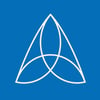
By: Anahana
The Anahana team of researchers, writers, topic experts, and computer scientists come together worldwide to create educational and practical wellbeing articles, courses, and technology. Experienced professionals in mental and physical health, meditation, yoga, pilates, and many other fields collaborate to make complex topics easy to understand.
